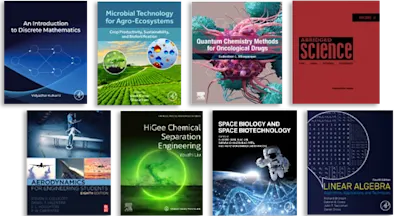
QSAR in Safety Evaluation and Risk Assessment
- 1st Edition - August 22, 2023
- Latest edition
- Editor: Huixiao Hong
- Language: English
QSAR in Safety Evaluation and Risk Assessment provides comprehensive coverage on QSAR methods, tools, data sources, and models focusing on applications in products safety evaluatio… Read more

QSAR in Safety Evaluation and Risk Assessment provides comprehensive coverage on QSAR methods, tools, data sources, and models focusing on applications in products safety evaluation and chemicals risk assessment.
Organized into five parts, the book covers almost all aspects of QSAR modeling and application. Topics in the book include methods of QSAR, from both scientific and regulatory viewpoints; data sources available for facilitating QSAR models development; software tools for QSAR development; and QSAR models developed for assisting safety evaluation and risk assessment. Chapter contributors are authored by a lineup of active scientists in this field. The chapters not only provide professional level technical summarizations but also cover introductory descriptions for all aspects of QSAR for safety evaluation and risk assessment.
- Provides comprehensive content about the QSAR techniques and models in facilitating the safety evaluation of drugs and consumer products and risk assesment of environmental chemicals
- Includes some of the most cutting-edge methodologies such as deep learning and machine learning for QSAR
- Offers detailed procedures of modeling and provides examples of each model's application in real practice
Preface
1. QSAR facilitating safety evaluation and risk assessment
Part I: Methods and Advances of QSAR
2. Development of QSAR models as reliable computational tools for regulatory assessment of chemicals for acute toxicity
3. Deep learning-based descriptors as input for QSAR
4. Decision Forest – A machine learning algorithms for QSAR modeling
5. Integrated modelling for compound efficacy and safety assessment
6. Deep learning QSAR methods for chemical toxicity prediction and risk assessment
7. Predictive modeling approaches for the risk assessment of persistent organic pollutants: Classical to Machine learning based QSAR Models
8. Machine learning based QSAR for safety evaluation
9. Advances in QSAR through Artificial Intelligence and Machine Learning methods
10. Advances of the QSAR approach as an alternative strategy in the Environmental Risk Assessment
11. QSAR modeling based on graph neural networks
Part II: Tools and Data Sources for QSAR
12. Modeling safety and risk assessment with VEGA HUB
13. Recent advancements in QSAR and Machine Learning Approaches for risk assessment of organic chemicals
14. admetSAR - a valuable tool for assisting safety evaluation
15. QSAR tools for toxicity prediction in risk assessment – a comparative analysis
16. Fast and Efficient Implementation of Computational Toxicology Solutions Using the FlexFilters Platform
17. Annotate a standard dataset for drug-induced liver injury to support developing QSAR models
18. Application of QSAR Models Based on Machine Learning Methods in Chemical Risk Assessment and Drug Discovery
19. EADB – The database providing curated data for developing QSAR models to facilitate assessment of endocrine activity
20. Centralized data sources and QSAR methods for the prediction of idiosyncratic adverse drug reaction
Part III: QSAR models for Safety Evaluation of Drugs and Consumer Products
21. QSAR modeling for predicting drug-induced liver injury
22. The need of QSAR methods to assess safety of chemicals in food contact materials
23. QSAR models for predicting in vivo reproductive toxicity
24. Aryl hydrocarbon receptors and their ligands in human health management
25. Use of in silico protocols to evaluate drug safety
26. QSAR models for predicting cardiac toxicity of dugs
Part IV: QSAR models for Risk Assessment of Chemicals
27. Similarity-based analyses for the false-positive and false-negative chemicals on the second Ames/QSAR international challenge project
28. QSAR Model of Photolysis Kinetic Parameters in Aquatic Environment
29. QSAR models on transthyretin disrupting effects of chemicals
30. QSAR models for toxicity assessment of multicomponent systems
31. Deploying QSAR to discriminate excess toxicity and identify the toxic mode of action of organic pollutants to aquatic organisms
32. QSAR models for prediction of carrying capacity of microplastic towards organic pollutants
33. QSAR models on degradation rate constants of atmospheric pollutants
Part V: QSAR models in Material Science and Other Areas
34. Significance of QSAR in cancer risk assessment of polycyclic aromatic compounds (PACs)
35. QSAR in risk assessment of nanomaterials
36. In silico and in vitro ecotoxicity - QSAR based predictions for the aquatic environment
37. In vitro to in vivo Extrapolation Methods in Chemical Hazard Identification and Risk Assessment
38. QSAR models in marine ecotoxicology
- Edition: 1
- Latest edition
- Published: August 22, 2023
- Language: English
HH